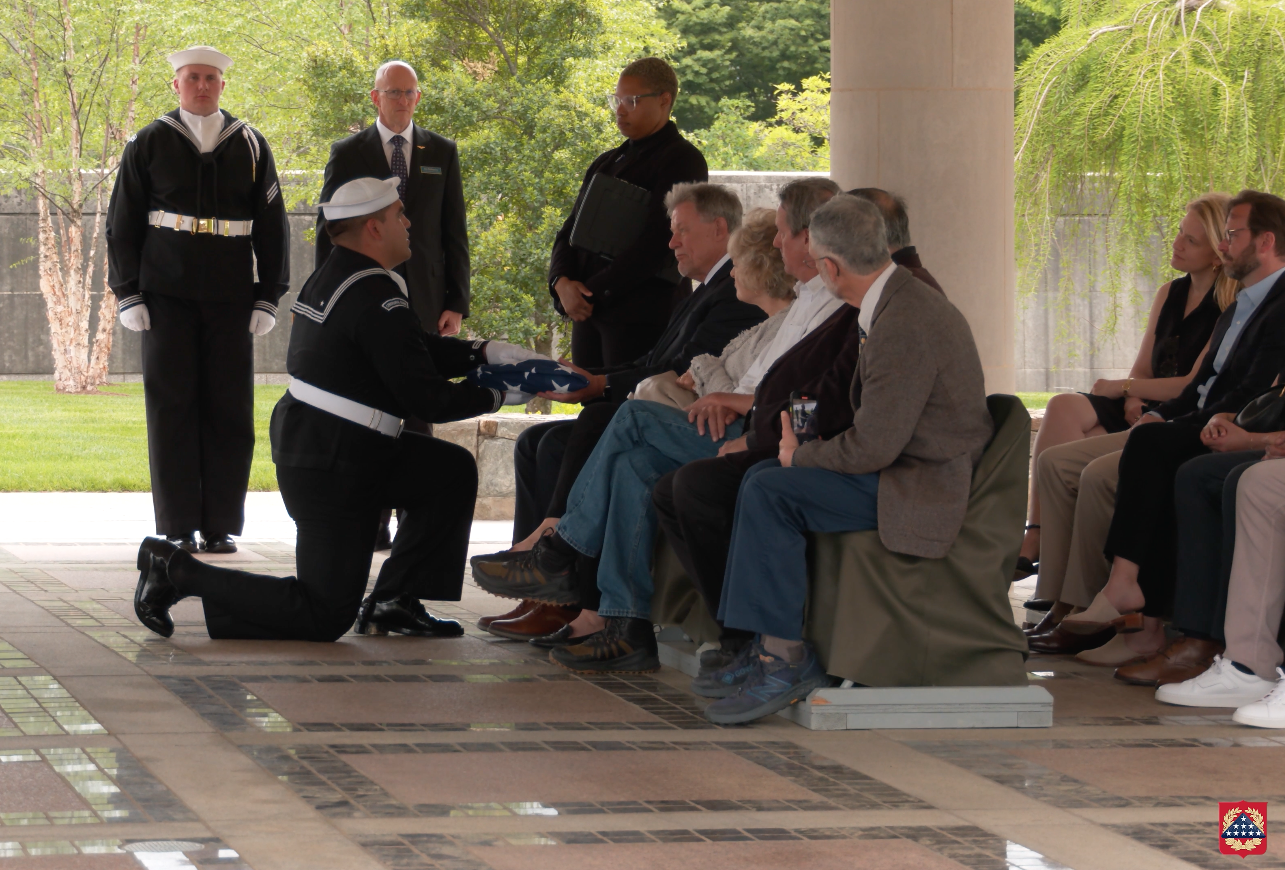
When Mae “Flip” Blair was growing up in Topton, Pennsylvania, in the 1930s, her father took her to the nearby airport to watch airplanes take off and land. “She would focus on the stewardesses and the fancy people getting on and off the planes,” explained her granddaughter, Melanie Blair Thies. “She made it her goal to be a stewardess,” as flight attendants were called at the time.
On April 25, 2025, members of Blair’s family came to Arlington National Cemetery to bid farewell to their mother, grandmother and great-grandmother.
After the United States entered World War II, Blair volunteered for the U.S. Naval Reserve’s WAVES (Women Accepted for Volunteer Emergency Service), a unit created in 1942 that enabled women to serve in non-combat roles. Blair served as a flight orderly for the Naval Air Transport Service, reaching the rank of specialist 3rd class, petty officer. Her son Charles recalled, “I know she was flying troops all over the place.”
The end of World War II could not keep Blair out of the skies. As a civilian, she chose a career as a flight attendant, which allowed her to travel the world. She worked first for American Airlines and then American Export Airlines, which merged with Pan American World Airlines (Pan Am) in 1950.
At Pan Am, she met senior pilot Charles F. Blair Jr., a well-known aviation pioneer who had served with the Navy in World War II. He was the first person to fly solo over the North Pole in a single-engine aircraft, among many other achievements. They married and had two sons.
When Blair ended her career as a flight attendant, she became a travel agent, working for a boutique agency in Connecticut. This job allowed her to continue flying to distant destinations, such as China and Kenya, with her clients. She collected travel spoons in all the countries she visited. “She was one of the early tourists to China,” her son Charles said. “We have her passports that show stamps from all over the world. She really covered a lot of ground.”
Although Mae and Charles Blair divorced after ten years of marriage, their children chose to have her inurned at Arlington National Cemetery, where they could visit both their parents (Charles is buried in Section 2). “We also felt she seemed worth it, since this place is just so amazing,” Charles said.
After the service, U.S. Navy Chaplain (Lt.) Christopher Wagner led the family to the Section 63 columbarium wall, where Charles placed his mother’s urn in its niche. Wagner then led the family in a final salute, and everyone slowly raised their right hands to the corner of their right eyebrows. It was a fitting tribute to a pioneering woman who began her globe-trotting career by serving in the U.S. Navy.
► Explore our Education Program materials to learn more about World War II, including women's roles in units such as the WAVES